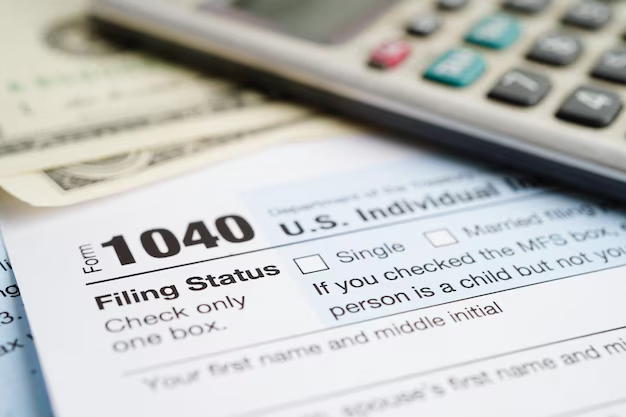How to Withdraw from Your 403(b) Without Paying Taxes and Maximize Your Savings
Retirement planning is crucial, and understanding when you can access your 403(b) funds without incurring penalties is key to making the most of your savings. Delving into the specifics of tax implications and strategic withdrawals can reveal opportunities to maximize your financial benefits. In this article, we'll explore the conditions under which you can withdraw from your 403(b) without paying taxes, and offer insights into strategic retirement planning.
Understanding the Basics of a 403(b) Plan
What is a 403(b) Plan?
A 403(b) plan is a retirement savings vehicle similar to a 401(k) but is designed specifically for employees of public schools, non-profit organizations, and certain ministers. This plan allows individuals to contribute a portion of their salary to a tax-advantaged retirement account, which can then be invested and grow over time.
Tax Advantages of a 403(b)
- Tax-Deferred Growth: Contributions are made pre-tax, which lowers your taxable income, and the investments can grow tax-deferred until withdrawal.
- Roth 403(b) Options: Some employers offer Roth 403(b) options, where contributions are made post-tax, allowing for tax-free withdrawals under certain conditions.
Key Features That Benefit Participants
403(b) plans offer a variety of investment choices, and many employers match contributions. Understanding how these elements contribute to your retirement security is essential, which means knowing when and how you can access these funds tax-free.
When Can You Withdraw Without Paying Taxes?
Age 59½ Rule
Generally, withdrawals from a 403(b) made after reaching age 59½ are not subject to early withdrawal penalties. However, they may still be taxed as ordinary income unless they qualify for specific exceptions.
Required Minimum Distributions (RMDs)
Upon reaching the age of 73, account holders must begin taking Required Minimum Distributions from their 403(b) plans. RMDs are taxed as regular income, but planning your withdrawals carefully can minimize the tax impact.
The Role of the Roth 403(b)
If you have a Roth 403(b), withdrawals are entirely tax-free if made after age 59½ and the account has been held for at least five years. This makes the Roth an attractive option for planning tax-free income in retirement.
Strategic Withdrawals and Tax Planning
Leveraging the 10% Early Withdrawal Exception
Under certain conditions, you might avoid the 10% penalty for early withdrawal before age 59½:
- Separation from Service: If you leave your job during or after the year you turn 55, you may withdraw without penalty.
- Qualified Domestic Relations Orders: Divorces may allow penalty-free withdrawals through court orders.
- Disability: Permanent disabilities can qualify you for a penalty-free withdrawal.
- Substantially Equal Periodic Payments (SEPPs): If you arrange to take equal payments over time, these may also evade penalty charges.
Strategic Tax Planning
Proper tax planning is crucial once you approach retirement. Here are some insights to keep in mind:
- Roth Conversions: Consider converting traditional 403(b) funds to a Roth 403(b) during years of lower income, managing your tax liability across retirement years.
- Distribution Timing: Implementing strategic timing for your distributions can reduce your tax burden, such as withdrawing in tax-efficient increments rather than larger lump sums.
Planning for a Tax-Optimized Retirement
Importance of a Diversified Retirement Strategy
Balancing your savings across different tax-advantaged accounts can provide flexibility and tax efficiency. Integrating Roth accounts, IRAs, and employer-sponsored plans can broaden your options.
Engaging with Financial Prospects
Engaging a financial advisor could provide unique insights tailored to your particular financial situation. Since individual financial circumstances vary widely, customized planning can help achieve the best tax outcomes.
Flexible Withdrawals and Budgeting
Anticipating your retirement needs and budgeting accordingly allows for adaptive withdrawals, ensuring your withdrawals sustain your lifestyle while optimizing tax impacts.
Helpful Summary: Key Takeaways for Harvesting 403(b) Funds Smartly
Here’s a streamlined summary to guide your decisions:
- 🕒 Withdraw Post-59½: Avoid penalties by waiting until you qualify by age.
- 📈 Understand RMDs: Plan for Required Minimum Distributions at age 73.
- 💡 Explore Exceptions: Review if you meet exemptions for early withdrawals.
- 🔄 Consider Roths: Utilize Roth conversions to optimize tax liabilities.
- 🎯 Strategic Withdrawals: Practice tax-efficient withdrawal timing.
- 📚 Seek Expertise: Consult with financial advisors for tailored solutions.
Exploring the intricacies of a 403(b) plan reflects the importance of proactive retirement planning. By understanding the nuances of withdrawals, tax implications, and strategic planning, you're better equipped to navigate the financial landscape and secure a comfortable retirement. Remember, personalized strategies are key, and diversifying your retirement income sources can pave the way for a secure and tax-efficient future.

Related Topics
- Are 403b Contributions Tax Deductible
- Can a 401k Be Rolled Into a 403b
- Can a 403b Be Rolled Into An Ira
- Can I Borrow Against My 403b
- Can I Borrow From My 403b
- Can I Borrow From My 403b Without Penalty
- Can I Contribute To 403b And 457b
- Can I Withdraw From 403b While Still Employed
- Can I Withdraw From My 403b To Buy a House
- Can You Max 403b And 457